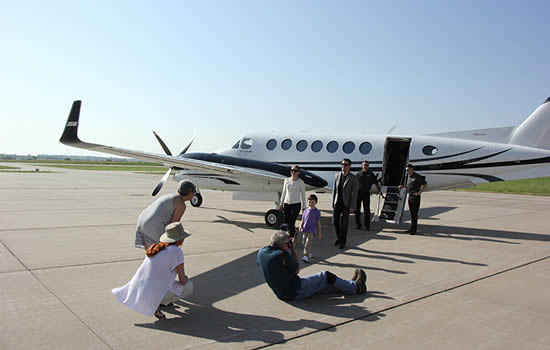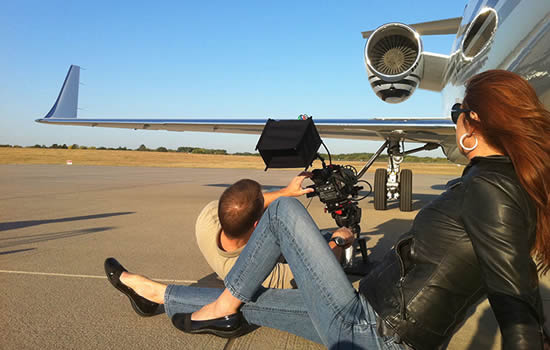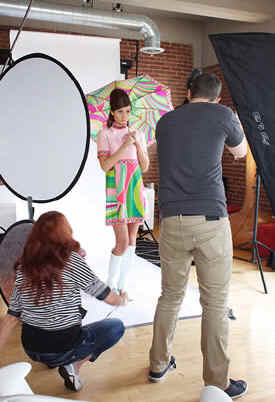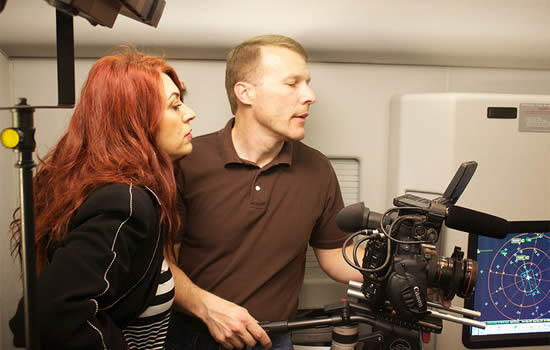| BlueSky Business Aviation News | ||||||||||||||||
|
||||||||||||||||
That it increases engagement, time on site and social sharing. That it boosts retention dramatically. That its use of music and visual storytelling connects emotionally like nothing else. But not all videos are created equal. As you think about producing your next one, here are some videoshoot lessons Iíve learned over my 30 years as a creative director. Create a Plan Donít wing it. Plan your shoot down to the minute. The location. The action. The talent. The props. Where you need to be and when. Include the names and cellphone numbers of your team so you have everything in one document. Specify clothing and wardrobe changes so you donít see the same person in the same outfit multiple times. Think things through. If your shootís outdoors, check the weather frequently and have a Plan B if you want sun and the skies say rain. Know when the sun rises and sets. Youíve heard of golden light or magic light. Well, you heard right. Itís that spectacular, fleeting light only seen right after sunrise or just before sunset. The light becomes softer and redder. Shadows lighten. Colors brighten. The ordinary becomes extraordinary.
Bring a talent release form and have everyone onscreen sign it. Even company employees. Thereís nothing worse than having a great video and having someone come back a year later and ask you to remove it from your website, tradeshow booth, or whatever Ė and you have nothing in writing saying you have permission to use it. Communicate Your Wishes Brief your team at the beginning. Let them know how you like to work and ask them how they like to work. Develop a mutual understanding of the goals, available resources, timeframe and role of each team member. Be clear in expectations so there are no dropped balls or unnecessary scrambling during the shoot. Use the approved shot list, script and inspiration boards, but keep your eyes open for unexpected but great shots. Capture all you can. You may not get a second go at it. Cross off the shots you've got in the bag so you can turn your focus to those that remain. You donít want to get back to the office and discover you overlooked a key visual. Thatís a conversation you want to avoid with your boss (or client).
Sometimes I frame up things with my camera so I can quickly show the video production crew what I have in mind for the next shot, working one shot ahead. This keeps things moving and helps me be as clear as possible in my direction. Maximize Your Assets I walk a full 360-degrees around each location. Scoping out possibilities. Hunting for visuals that surprise you. Selecting the best vantage points. If youíre not working with models, but are shooting real people, I look for people who are not necessarily beautiful, but who have life. Sparkle. Personality.
Check Your Work Review footage early in the shoot. Make sure you like the pace, camera moves, angles, lighting and more. If you donít, change things up. Then review again. Take time for a sit-down lunch. You need that break. But you can still be on the job. Use this time to recharge, but also to check and discuss your footage again. If you see something didnít work, reshoot. Keep shooting until you have it right. When you think youíve got the shot, check it off and move on.
Now, lest you think a videoshootís a grim, nail-biting affair, it shouldnít be. Yes, things can get tense, but if they do, itís your role to lighten the mood. Keep things light and fun. Happy people having a good time translates on camera. The same goes for your crew. Keep hydrated and fueled. You donít want thirsty, hungry, worn-out crew. Believe me. I speak from experience. When you have lost your light, call the shoot and head home. Don't kill yourself. Youíve done your best. And the resulting work will show it. Trust me.
|
||||||||||||||||




